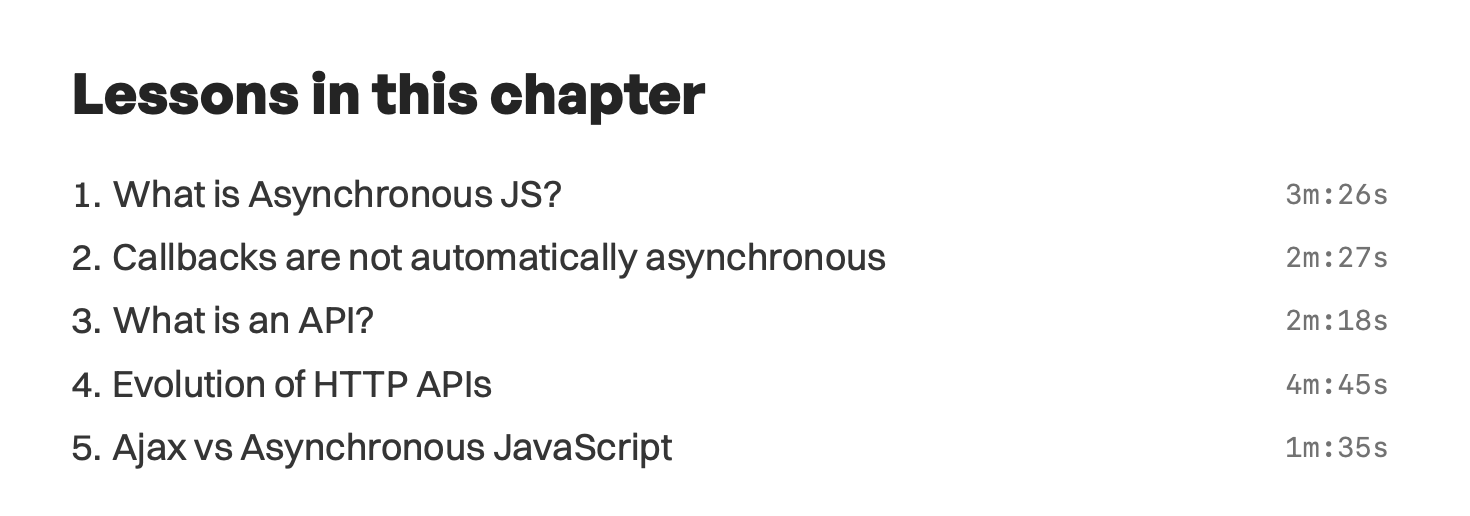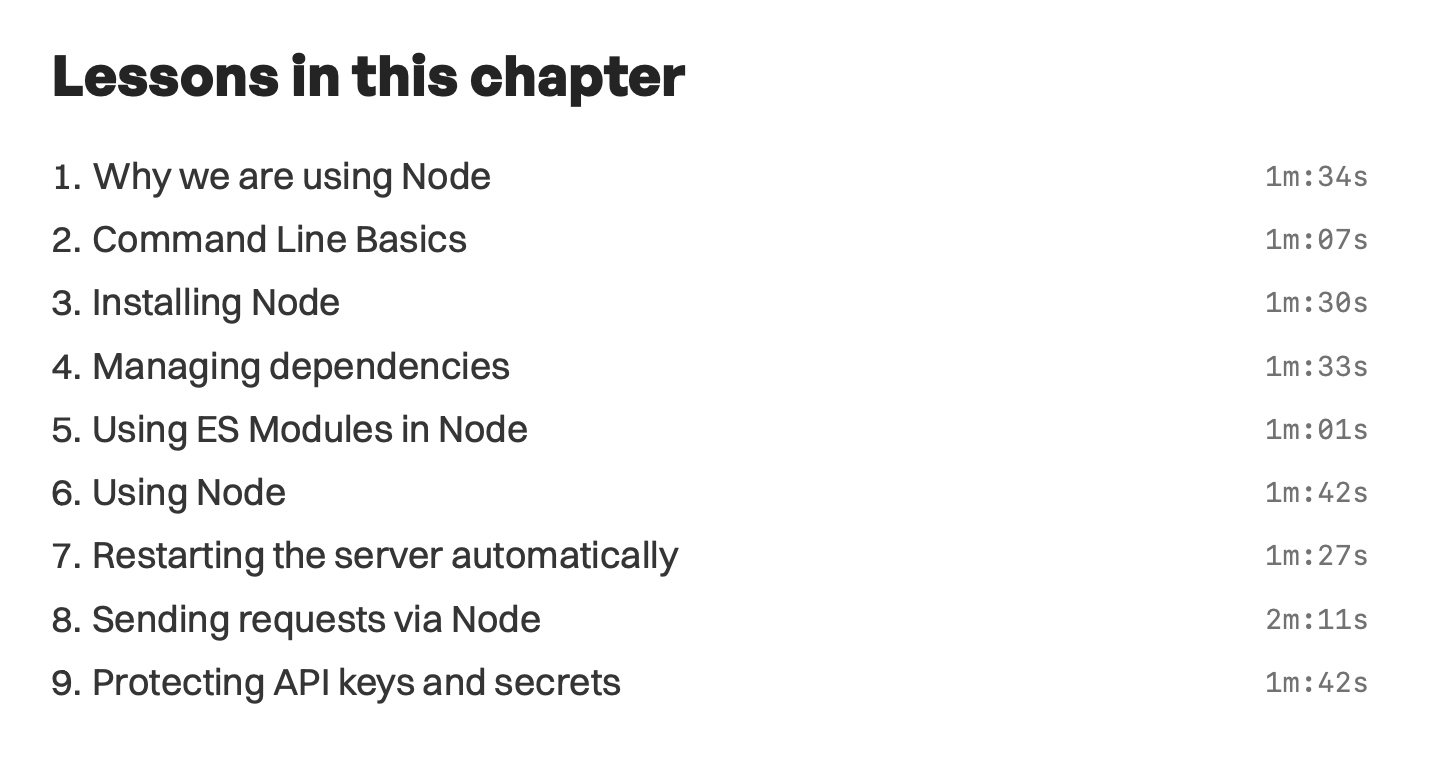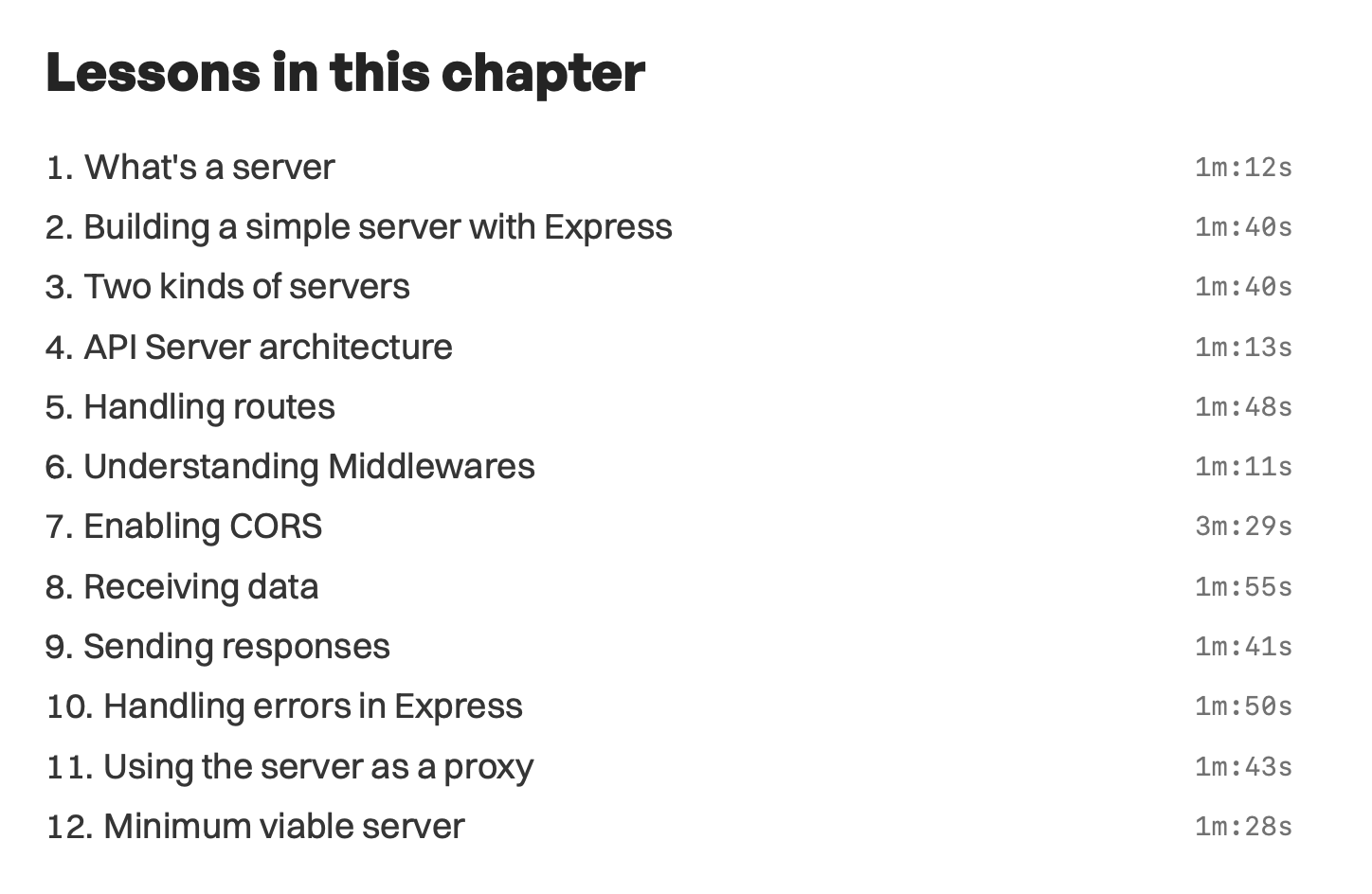Updates for Understanding Async JS and Rest APIs
I spent two weeks reworking the contents of Understanding Asynchronous JavaScript and Rest APIs and I’m happy to announce the changes I have made.
This course is now much easier to understand (and also much more succinct) compared to before. From my experience, it should now be able to resolve most of the confusion you may face around the topic of Asynchronous JavaScript and Rest APIs.
Previously, this course was also called “Understanding Async JS” and “Mastering Async JS” at different times.
I renamed this course to “Async JS and Rest APIs” because it reflects the contents more accurately than its predecessors.
I’m giving away 2 chapters of this course for free — no registration required. You can access the free chapters by going to Magical Dev School. (No registration necessary).
The Reworked Chapters
Here are the chapters that I reworked and what each of them is about:
Chapter 1: Introduction
In the first chapter, you get to understand what Asynchronous JavaScript is (and what it is not). You will also learn what an API is (and what it is not).
This will create a sound foundation that will help you use Asynchronous JavaScript and Rest APIs effectively.

Chapter 2: Fundamental Concepts
In the second chapter, we focus on the basics you need to know to be able to use Asynchronous JavaScript. Here, we cover concepts like callbacks, promises, async await, event loop, and other things you must know before using Rest APIs.

Chapter 3: Rest API
In Chapter 3 we dive into everything you need to know about Rest APIs to be able to use them effectively. This one gives you all the foundation you need to play with any Rest API in the world.

Chapter 4: Node Basics
After learning about the necessary concepts in the first three chapters, we made a switch to learning how to use Node.
We do this because most real-world APIs prevent you from accessing their servers from a browser — so the only solution is to use a server.
And when it comes to servers, I’m showing you how to use Node here since you can rely on your JavaScript knowledge and not have to learn a new programming language.

Chapter 5: Building a server
In Chapter 5, you’ll learn how a server works and how to build one — so you can create a server for all your API needs. (Yes, even if you create the API for yourself).
Here, we use Express because Express is the most popular server framework.

Chapters 6 and 7…
I rework the rest of the course (chapters 6 and 7) in the future and make them more easy to understand and succinct as well.
I’m not sure how that would work right now because I haven’t gotten to rewriting them yet. But I’m pretty sure I can make them so simple to understand that anyone will be able to pick them up.
In case you’re wondering:
- Chapter 6 is about OAuth — which is the industry standard’s way of authenticating most users
- Chapter 7 is a practical session where we build a login app with OAuth.
That’s all I can share with you right now. I’ll share more as I work on the course!
For now, please enjoy the two free chapters I already released for you. And if you want to, you can upgrade to read the entire course I have prepared to help you understand Asynchronous JavaScript and Rest APIs.
